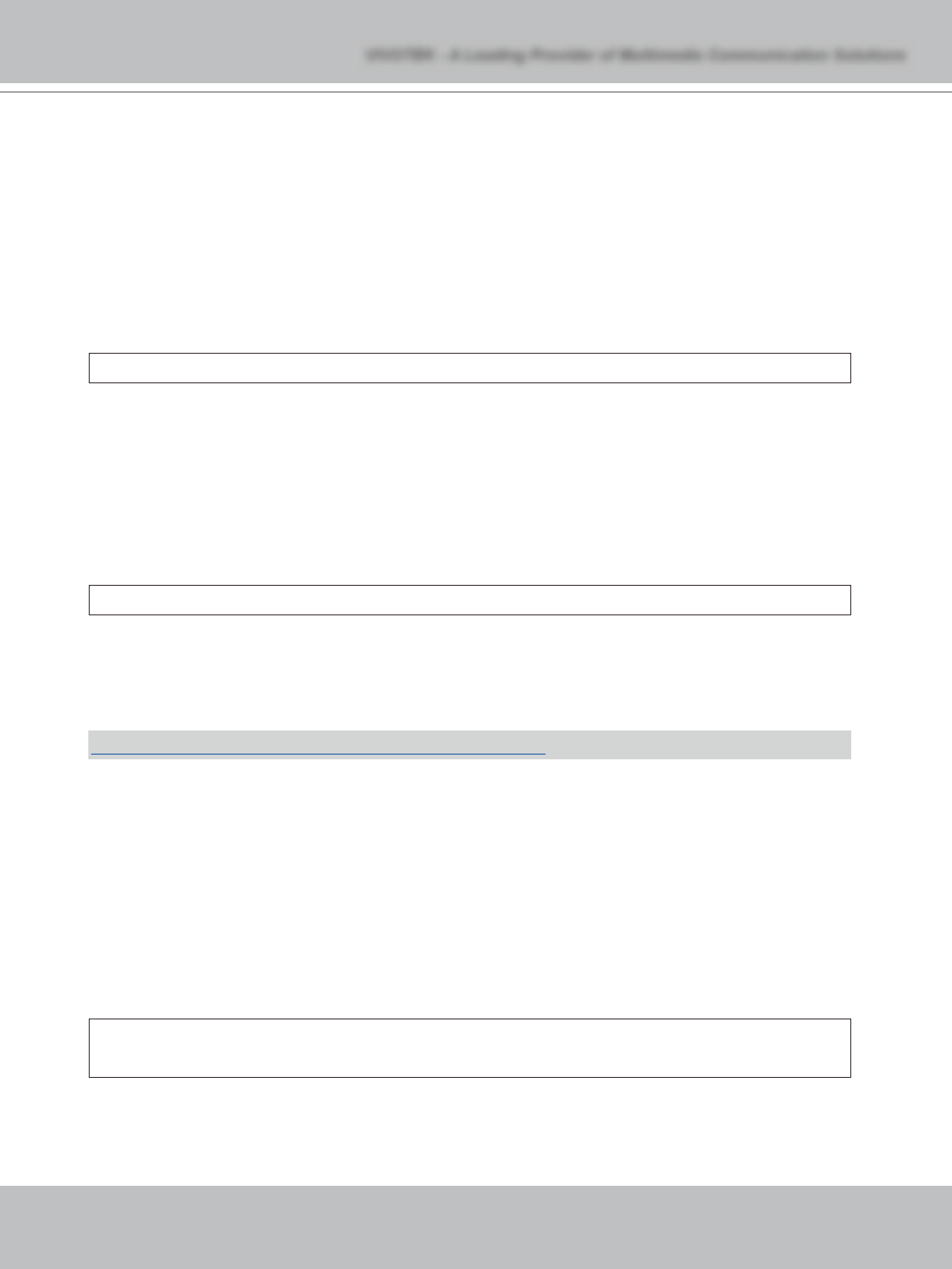
- 60 -
www.vivotek.com
URL syntax' are written with the “Syntax:" word written in bold face followed by a box
with the referred syntax as seen below. The name of the server is written as
<servername>. This is intended to be replaced with the name of the actual server. This
can either be a name, e.g., "mywebcam" or "thecam.adomain.net" or the associated IP
number for the server, e.g., 192.168.0.220.
Special note will be marked as RED words to take care.
Syntax:
http://<servername>/cgi-bin/viewer/video.jpg
Description of returned data is written with "Return:" in bold face followed by the
returned data in a box. All data returned as HTTP formatted, i.e., starting with the
string HTTP is line separated with a Carriage Return and Line Feed (CRLF) printed as
\r\n.
Return:
HTTP/1.0 <HTTP code> <HTTP text>\r\n
URL syntax examples are written with "Example:" in bold face followed by a short
description and a light grey box with the example.
Example: request a single snapshot image
http://mywebserver/cgi-bin/viewer/video.jpg
General CGI URL syntax and parameters
CGI parameters are written in lower-case and as one word without any underscores or
other separators. When the CGI request includes internal camera parameters, the
internal parameters must be written exactly as they are named in the camera or video
server. The CGIs are organized in function related directories under the cgi-bin
directory. The file extension of the CGI is required.
Syntax:
http://<servername>/cgi-bin/<subdir>[/<subdir>...]/<cgi>.<ext>
[?<parameter>=<value>[&<parameter>=<value>...]]
User's Manual - 69
VIVOTEK - A Leading Provider of Multimedia Communication Solutions


















